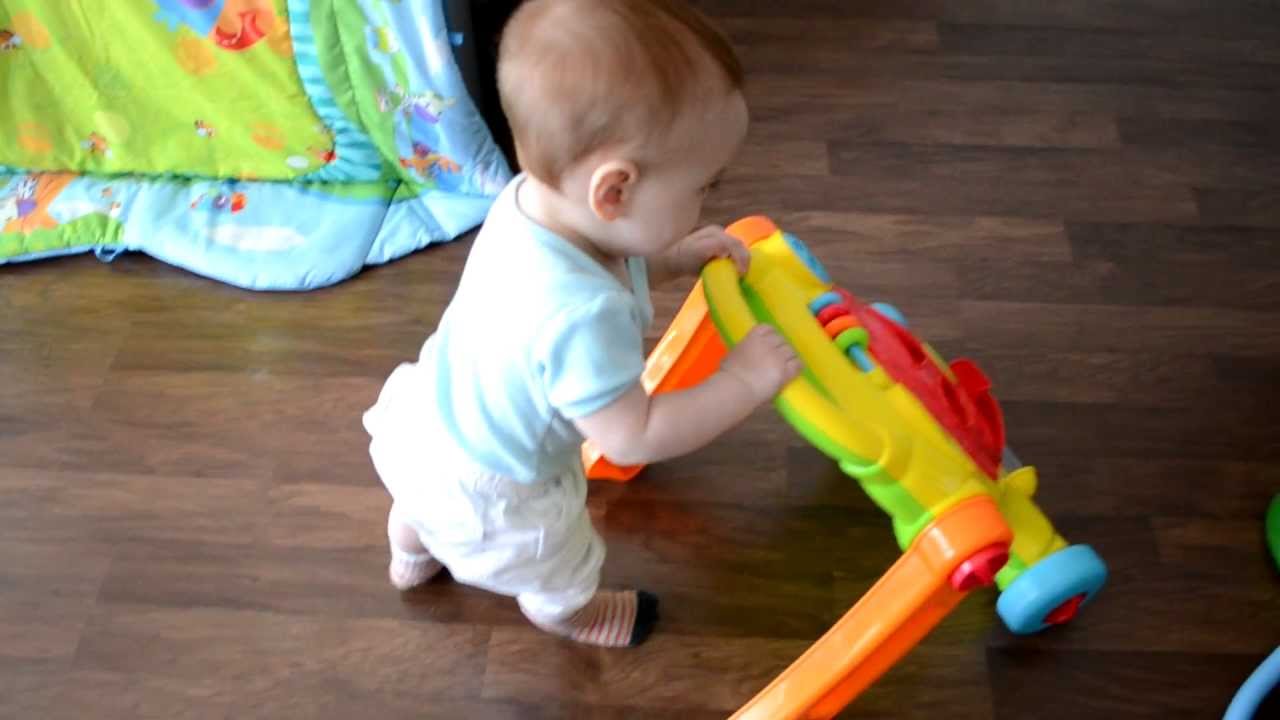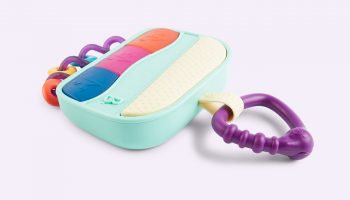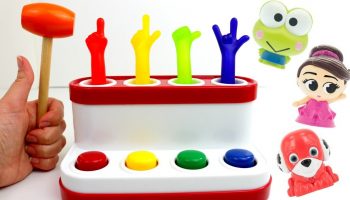
Your baby’s first means of transport will probably be a baby walker. Whether you want one with a buzzing play centre, or minimal stimulation and room for their own toys, we’ve got just the thing to get them from A to B while having a whole lot of fun along the way.
Contents
- 1 Things to Know About Walking
- 1.1 First steps are a very big deal
- 1.2 Every child follows the same sequence of stages
- 1.3 You’ll recognize a new walker
- 1.4 There’s little parents can do to speed up the timetable
- 1.5 Early or late walking may provide clues to your child’s personality
- 1.6 Walking can also be influenced by
- 1.7 Don’t freak if she prefers crawling
- 1.8 Stopping is hard
- 1.9 Barefoot is best
- 1.10 Walking changes everything!
- 2 Benefits of Baby Push Walkers
Things to Know About Walking
First steps are a very big deal
Even if you’re not obsessing about it, chances are you’ve been asked, “So is he walking yet?” When will the momentous event occur? Your baby will likely take his first steps between 9 and 15 months.
Every child follows the same sequence of stages
Here’s a quick timeline of milestones that lead to walking.
Sitting Up
At around 6 months, baby starts solving the puzzle of how to use the muscles in his trunk to stay upright.
Pulling to a Stand
The timing of this varies; many are trying by 10 months. “Seventy percent of our body mass is from the hips on up, so the legs need a lot of strength to lift the torso,” notes Jody L. Jensen, PhD, professor of kinesiology at the University of Texas.
Cruising
Again, age varies, but when he does it, he’ll make his way around the room using whatever furniture is available.
You’ll recognize a new walker
The final piece of the walking puzzle is learning how to lift off with one foot while balancing on the other. She’ll lurch along like Frankenstein as she gets used to her land legs — the wide stance and outstretched arms are characteristics of all new walkers. In order to stand, she has to contract a lot of muscles. But to walk, she eventually needs to relax her hips and knees a bit. “The challenge is figuring out how to get just the right amount of muscle tension in the legs,” Jensen says. But 1-year-olds are quick studies — it won’t take long until she loosens up and is tearing around the house.
There’s little parents can do to speed up the timetable
What if all the other babies in the playgroup are on two feet, and yours is content with the view from the floor? If your child is 16 months and hasn’t walked, talk to your doctor. (There are interventions available.) Otherwise, try not to stress. Push toys, stationary activity centers, and jumpers will not help your child walk any sooner. On the other hand, they don’t cause any harm, so if your baby likes these toys, let him play. Avoid walkers, which allow kids to get into trouble fast.
Early or late walking may provide clues to your child’s personality
Many parents wonder if early walking means there’s a sports scholarship in their child’s future. Whether your child is an early or late walker says less about his future athleticism and more about whether he’s a risk taker or a wait-and-see type. “Some kids have an ‘I can do anything!’ mentality and want to get up and get going as soon as they discover it’s an option,” says Laura Jana, MD, author of Heading Home with Your Newborn. “They don’t worry about falls.” Others don’t want to start walking until they are sure they can do so fairly well. These children may turn out to be more cautious and contemplative.
Walking can also be influenced by
Size
Bigger babies often walk later because they need more strength to get upright than a smaller baby does.
Recurrent Ear Infections
“If a child is 16 months or older and isn’t walking, we ask about illnesses. An ear infection can throw off baby’s balance and delay walking,” Jensen says.
Birth Order
A baby with an older sib may be motivated to walk earlier because he wants to keep up — and imitate what the big kid is doing.
Don’t freak if she prefers crawling
It’s not uncommon for babies to alternate between crawling and walking. If your baby sees something across the room that requires her immediate attention, she may get down on all fours. It’s like she’s thinking, I have to get there stat. Walking is going to take way too long.
Stopping is hard
Once they get going, the next challenge is figuring out how to stop. “We say beginning walkers ‘fall’ into their steps,” says Jensen. Each step has more force than an adult’s because newbies don’t bend their knees or use a heel-toe motion, both of which absorb some of the impact. They haven’t figured out how to break their forward momentum by stopping with one foot and bringing the trailing foot to meet it. Their way of stopping? Falling. “Usually it goes step, step, fall,” Jensen says.
Barefoot is best
Babies learn to walk more easily if they don’t wear shoes, because bare feet allow direct contact with the floor. When you go on outings, of course, baby needs some shoes. Look for a pair with flexible soles — you should be able to fold the shoe in half. Once she’s walking outside, get a pair with skids.
Walking changes everything!
“Getting around on his own allows your child to interact and explore the world in a whole new way,” Dr. Jana says. “It opens all sorts of new possibilities.” She adds that having a mobile, walking child really changes everything for parents, too, in terms of keeping kids safe and entertained. “The adjustment to having a toddler is a new milestone of parenthood!”
Benefits of Baby Push Walkers
Improves Motor Skills
This is the earliest time when the child starts having notions of moving. At this time, you need to help support the child by providing the push toy. It helps them build up their motor skills and gives them a sense of movement and coordination. The more help they get from these toys, the faster they can generate their motor skills and hence start walking.
Develops Imagination
You need your baby to be curious and imaginative. What could be the better way to stimulate their imagination than through such toys? It helps to boost your child’s self-esteem and skills which he has already developed, like lifting one foot while balancing other at the same time.
Learn More
Most of the modern day push walkers have other toys that come built in with them. These toys can be the blocks to make or a whole new activity center for your kid. These toys will help them rejuvenate their imagination.
These are some of the benefits of the best baby push walkers and why you need them for your child.





